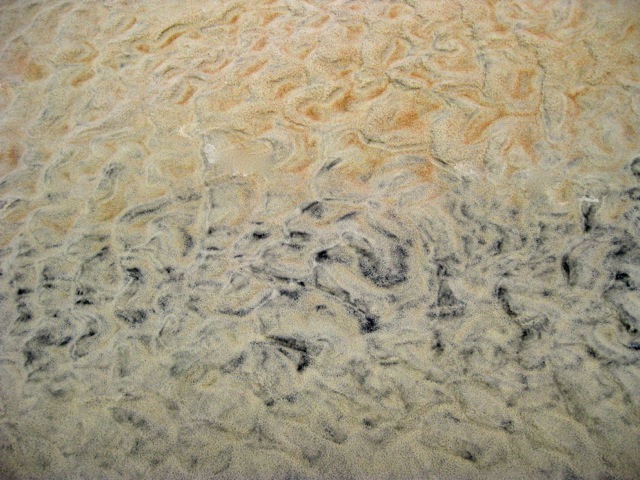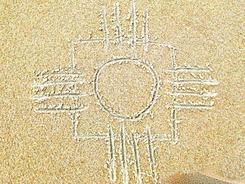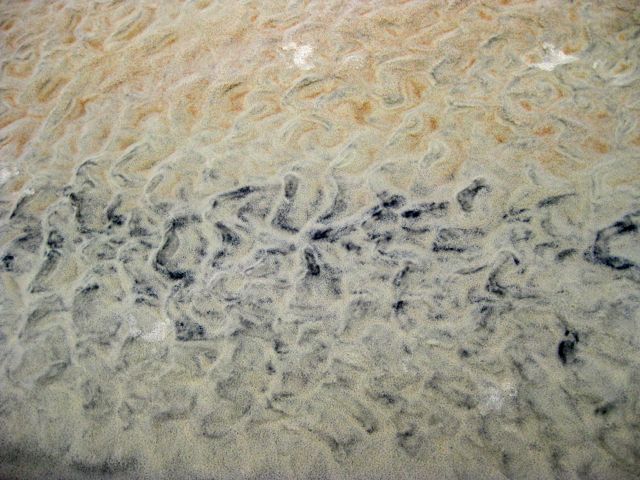Meet the Teachers
Florida Sandplay Therapy Association
SandSearch.org
Interview with Donna Johnson, LCSW, ATR-BC
By Bunnie Graham
August 2013
Donna, how did you first become interested in sandplay therapy?
I attended a week of Cecil Burney presenting on sandplay at Journey into Wholeness. As an art therapist, I was blown away by the slides of trays and the philosophical orientation of sandplay due to Dora Kalff’s roots in Tibetan Buddhism. My clients showed a greater depth in their work in the sand than I saw in their art media creations. At the time I was pursuing training to become a Jungian analyst. When the ISST formed and a certification process was possible, I switched to sandplay.
What sustains your interest in sandplay therapy today?
My current interest in sandplay is sustained by so many things: that sense of new discoveries with each tray creation, the depth of the work, but I think just as much it’s the quality of colleagues who take the sandplay path.
How does sandplay inform your life and why do you teach it?
Sandplay has evolved within me as an outlook toward life. I am a better person as I have grown in embracing the “free and protected space.” I teach sandplay to share what I know—this esoteric body of knowledge. I grow every time I share case images in the reciprocity of student/teacher experience.
How do stories about Dora teach us about sandplay?
Dora taught us through her use of herself as a vehicle in the process.
What would you say are some essentials of sandplay therapy?
Essentials of sandplay therapy include:
1) A world view about our broken connection to the earth
2) Stages of the sandplay process
3) Metaphor and symbols
4) Transcendent function of symbols
5) Change at a cellular level through alchemical process
6) That both client and therapist alike are growing and impacted by the sandplay productions that we are honored to witness
7) An ongoing stretching and evolution in our capacity to contain the “free and protected space.”
As a teacher, do you have a main goal for your students?
My initial goal for students is for them to think metaphorically and question the concrete narcissism of our culture. If they go beyond that, to embrace sandplay as a tool for clients to heal, it’s even better.
Have you had any learning experiences in teaching sandplay therapy that stand out?
Yes, I always learn something as I teach sandplay therapy. There occurs a synchronicity in which my clients are more open to sandplay as I delve deeper in my preparation to teach.
The last seminar I taught contained three deaf therapists out of a class of twelve. I had to work closely with the interpreters and share my outlines and PowerPoint in advance of the class meetings. It forced me to become more organized and clear in my communication. One of the interpreters was so moved by the material that she returned to grad school for a counseling degree so that she could ultimately study sandplay.
How does co-transference show up in the STI classroom?
In the co-transference, there is that mutual impact in which teacher and student are moved by the images. Something comes out of me as I am awakened by the audience that is unique to each presentation.
How do you teach about a method that is very subjective and private?
I teach through the generosity of clients who allow me to share their stories. Sandplay is an extremely intuitive therapy. I have to allow myself to be impacted personally both with the client and with students. We are honored to be witnesses.
Is there a religious (as used in Jung's work) aspect to sandplay?
When accessing the Self, the client opens to the cosmos. The ego knows that it is no longer “It.” I think that’s a deeply spiritual moment - perhaps, not religious.
Does your own typology affect the way you teach sandplay?
Yes, I am both a feeling type and an intuitive. In supervision I access both of those functions as sources of knowledge. Sometimes, it is difficult to articulate intuitive knowledge particularly in our increasingly CBT world in mental health.
What is one of the toughest questions you have fielded in teaching?
I was asked one time to comment on the use of green sand. I have to admit it came at me out of left field and felt totally foreign to my experience of sand as earth. However, I enjoy questions that help me rethink a case or broaden my understanding of a symbol.
Thank you, Donna.
Fostering growth & healing through symbolic process




